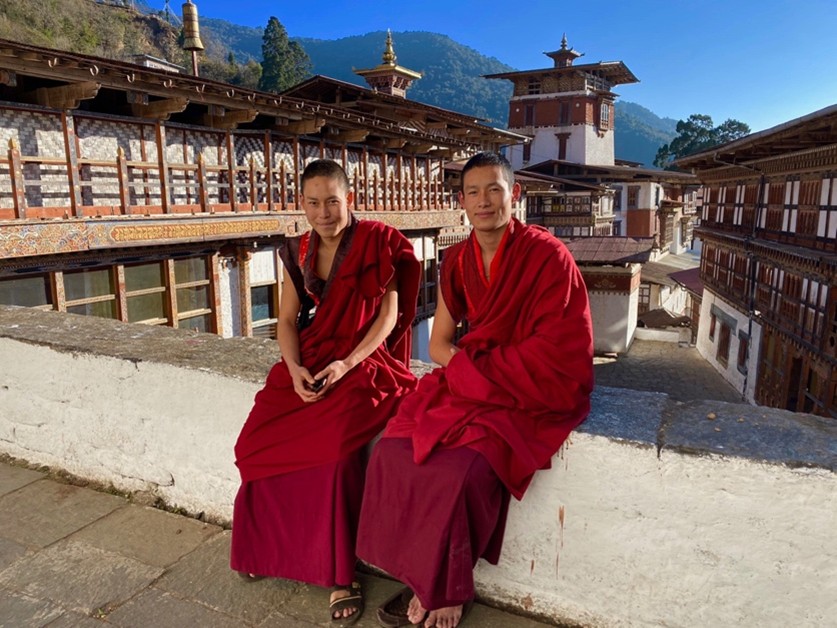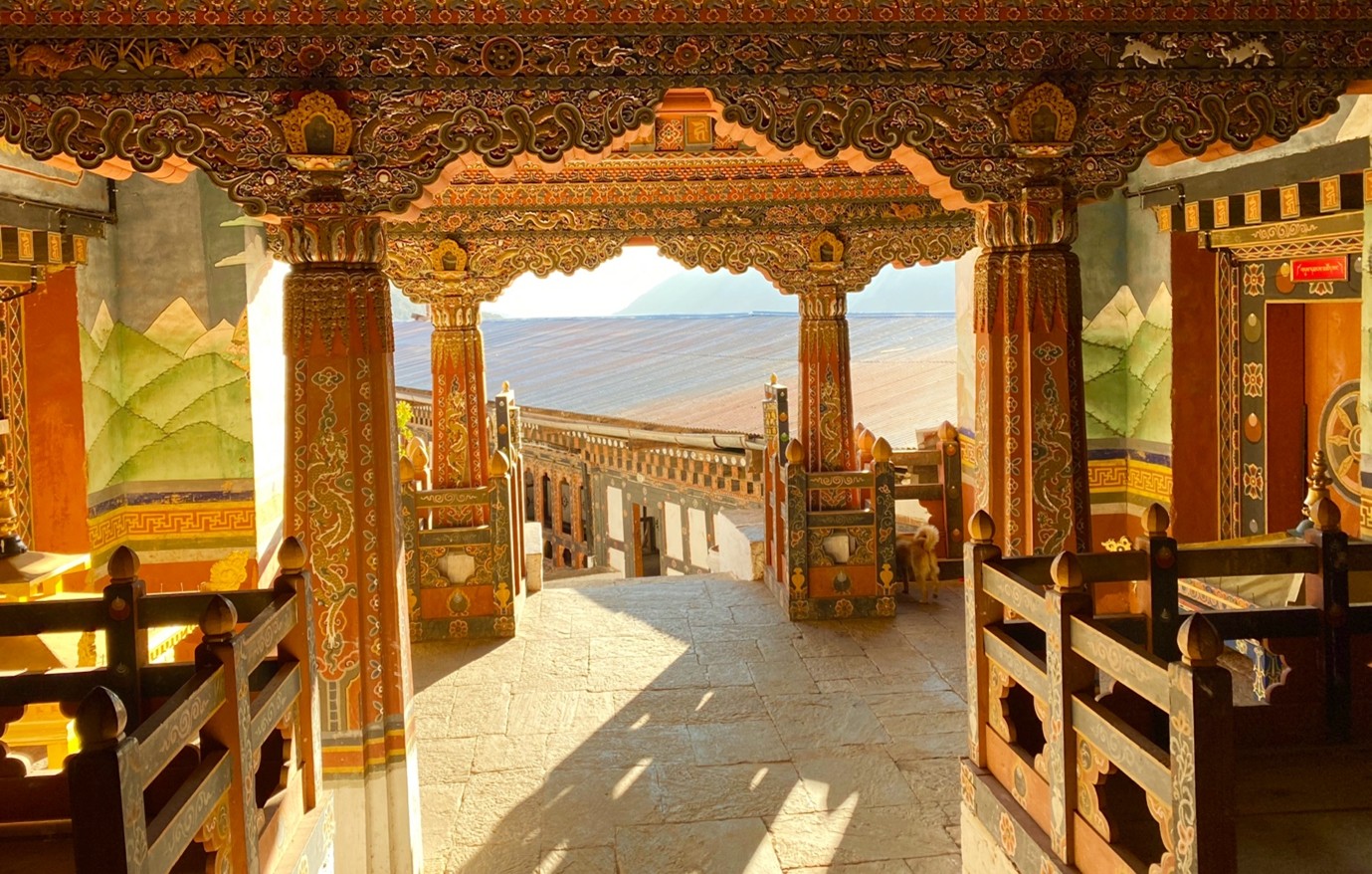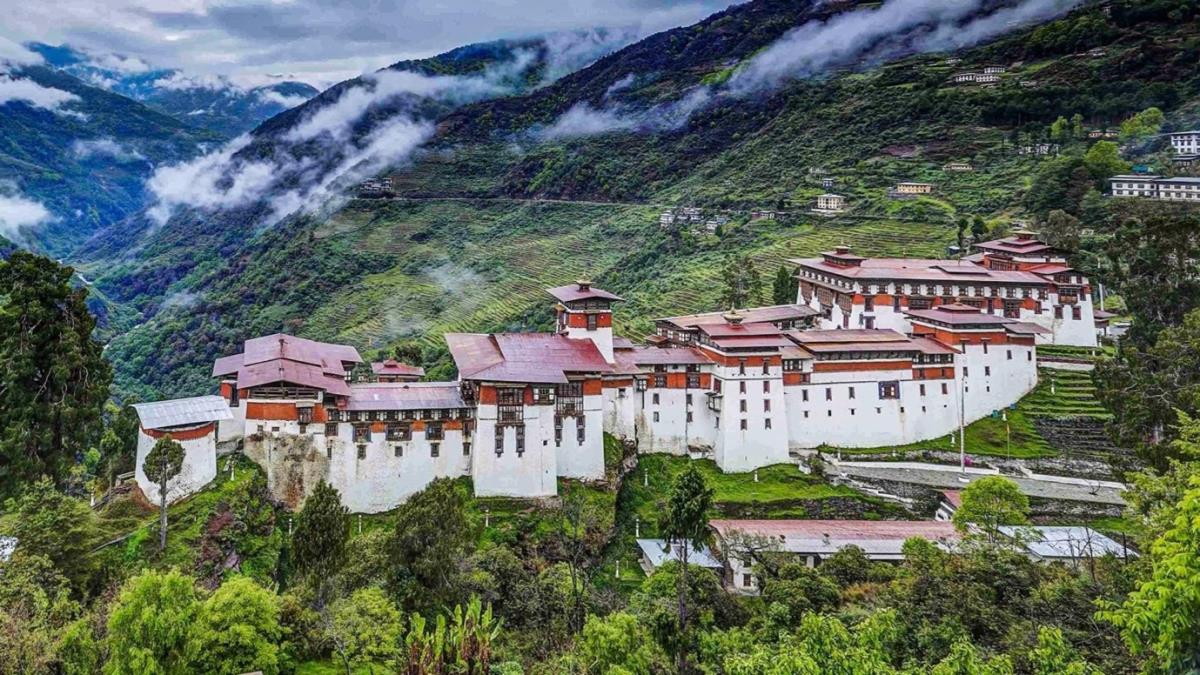There are many dzongs in Bhutan, most of them built in the sixteenth century as fortresses. They come complete with slots in the walls from where an archer could shoot an arrow at the invading army, usually coming from Tibet. Some of them are enormous, made in the traditional Bhutanese way with wood and whitewashed stucco and without nails.
The one at Trongsa is easily my favourite. Its site and history have given it a uniqueness that isn’t found in other dzongs. It’s not as ornate or as beautiful as the one at Punakha but it is much more fun to explore.
It started life in 1541as a meditation room. Several sections were later added, stretching out over the spur and making it Bhutan’s longest dzong. The higher part used to have a tunnel that connected it to the watchtower further up the hill, called the Ta Dzong. The lower section has views over the Mangdue Chu, the river at the base of the gorge below.
It became strategically important due to its central location, able to exert influence over both the east and the west. The first two kings of the current Wangchuk royal family ruled from Trongsa. Tradition has it that future kings must serve as governor, or penlop, of Trongsa before ascending to the throne.
Today the dzong is part monastery and part local government administrative centre and you are likely to come across monks and civil servants going about their daily business.

I love to wander the courtyards of this dzong, which are all on different levels, connected by beautiful stone staircases. In recent times, there has a growing population of resident monkeys. Their frequently cheeky behaviour was making life difficult for the resident monks and there has been a concerted effort to relocate them.
My favourite photo of Trongsa Dzong is of the entrance hall to one of the courtyards, where there are two large prayer wheels, ornate columns and Buddhist artwork on the walls. I just got the light at the right moment.

The most impressive way to reach the dzong is on foot. There is a tough but short 2-hour hike from the viewpoint on the way into town. The trail descends steeply through rhododendron forest (in full flower in March) to reach the river. A new wooden bridge takes you across to the other side where you start the steep climb up through mixed forest to the dzong. You can continue the walk all the way to the watchtower, now a museum, for a great half day.

